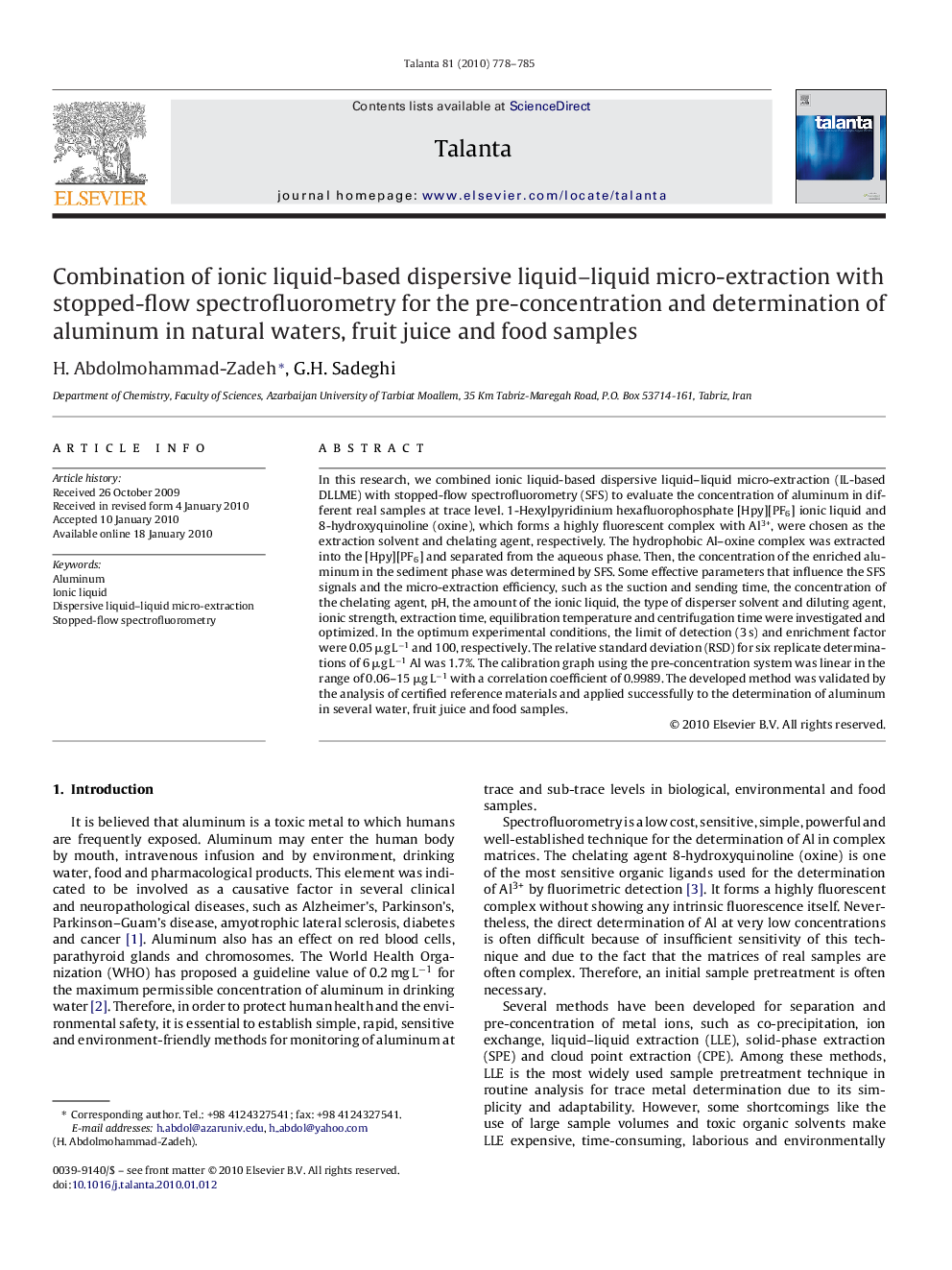| Article ID | Journal | Published Year | Pages | File Type |
|---|---|---|---|---|
| 1246496 | Talanta | 2010 | 8 Pages |
In this research, we combined ionic liquid-based dispersive liquid–liquid micro-extraction (IL-based DLLME) with stopped-flow spectrofluorometry (SFS) to evaluate the concentration of aluminum in different real samples at trace level. 1-Hexylpyridinium hexafluorophosphate [Hpy][PF6] ionic liquid and 8-hydroxyquinoline (oxine), which forms a highly fluorescent complex with Al3+, were chosen as the extraction solvent and chelating agent, respectively. The hydrophobic Al–oxine complex was extracted into the [Hpy][PF6] and separated from the aqueous phase. Then, the concentration of the enriched aluminum in the sediment phase was determined by SFS. Some effective parameters that influence the SFS signals and the micro-extraction efficiency, such as the suction and sending time, the concentration of the chelating agent, pH, the amount of the ionic liquid, the type of disperser solvent and diluting agent, ionic strength, extraction time, equilibration temperature and centrifugation time were investigated and optimized. In the optimum experimental conditions, the limit of detection (3 s) and enrichment factor were 0.05 μg L−1 and 100, respectively. The relative standard deviation (RSD) for six replicate determinations of 6 μg L−1 Al was 1.7%. The calibration graph using the pre-concentration system was linear in the range of 0.06–15 μg L−1 with a correlation coefficient of 0.9989. The developed method was validated by the analysis of certified reference materials and applied successfully to the determination of aluminum in several water, fruit juice and food samples.
